What is Dry Canning?
This page may contain affiliate links. More Information.
What is dry canning? Dry canning refers to a few different processes, because people use different terminology for different methods.
There is ‘dry canning’ dried foods like wheat, oats, and grains in a metal can that is sealed and stored long term. Sometimes by “dry canning” people mean oven canning where you put jars in the oven, fill them with dried foods, and the jars seal when they cool.
I want to focus on something new that I’ve seen in canning groups. I’m highly concerned about it.
What is Dry Canning?
Dry Canning Dried Foods
There are two different methods often called “dry canning.” One is canning dried foods like wheat, oats, and grains in a metal can with oxygen absorbers. A special tool seals the metal can. There’s nothing wrong with that, but it’s not what I’m talking about today. (Find more information on that method of dry canning here.)
Oven Canning
Sometimes by “dry canning” people mean oven canning. Again, this has to do with dried foods like grains, wheat, and beans. This is where you put your food in the jar and put the jar in the oven. Then, you take it out and put the lid on, and it seals. There are many problems with this method. I won’t go into detail today. I’ll try to do videos on both of those topics.
Note: You can cook and can dried beans with liquid. Learn more about canning dried beans here.
A New Kind of Dry Canning
I want to focus on something new that I’ve seen in canning groups. I’m highly concerned about it. They call it “dry canning,” but that’s where they’re actually preserving foods that you would generally process in a pressure canner. Usually, you’d add liquid. I mainly see this for root crops like potatoes. They follow all of the same directions as the regular processing instructions, but they don’t add any liquid. There are all kinds of problems with this. Let’s go through them one by one.
Is This Type of Dry Canning Safe?
The main problem with this type of dry canning is that you’re not adding the liquid. Heat penetrates through the jar at a different rate if it has that liquid circulating in the jar. To be safe for shelf storage, vegetables, meats, or fruit has to get up to a certain temperature. For vegetables and meats, you want to get it up high enough that it stops botulism, so it’s very important.
When they did the testing, they had liquid in the jar. That liquid starts circulating, pulling the heat around with it. It’s generally circulating the heat through the whole jar at the same time. You’re not going to get a cold spot in the middle of the jar. The heat must get into the coldest part of the jar to make sure that spot gets to a high enough temperature. When you’re heating that jar without liquid, the heat starts penetrating from the outside of the jar into the middle. It won’t heat up at the same time.
Now, it might seem like such a minute difference, but they tested it with the heat is circulating throughout. It’s going around all of the food pieces, heating everything up at a different rate. You can’t go by the testing that’s done with the liquid while skipping the liquid, because you just changed the whole thing.
A quick additional note to clarify: Canning raw meat without liquid is ok. It is included in the tested methods. The meat produces its own juices. The issue is arising because people are leaving the liquids out of products that have not been tested this way. Specifically vegetables.
Note on Bacteria
I found this interesting fact by researching before I filmed this video. The bacteria itself reacts differently to a dry heat than a moist heat. I never knew that before. Moist heat affects the bacteria differently than dry heat would.
For those reasons, don’t try dry canning. Don’t just assume that if you’re using the tested processes, you can just skip the liquid and keep your food safe. It’s not true.
When I first heard about this new method of dry canning vegetables (without adding any liquid) I thought, “Oh, that doesn’t sound like a good idea.” My hunch was right. I did the research. It’s not approved. It hasn’t been tested. It’s new, from what I have heard, and I don’t recommend it.
I hope you enjoyed this and it was helpful, and I hope you’ll make wise decisions with your home food preservation. Again, this is Sharon with SimplyCanning.com. You have a great day!
Would you like to receive notifications when more Canning Chats are released?
Related Pages
Oven Canning
Oven canning. Find out if it works or not. Will your jars seal?
Canning Safety Overkill?
Canning safety overkill is a concept that doesn’t make much sense. Food can be spoiled even without mold. Botulism is the #1 worry for improperly canned food. SimplyCanning.com goes into more detail.
Food Grade Storage Containers
Food Grade Storage Containers, safe food storage; long term food storage
Pin This to Find Later!
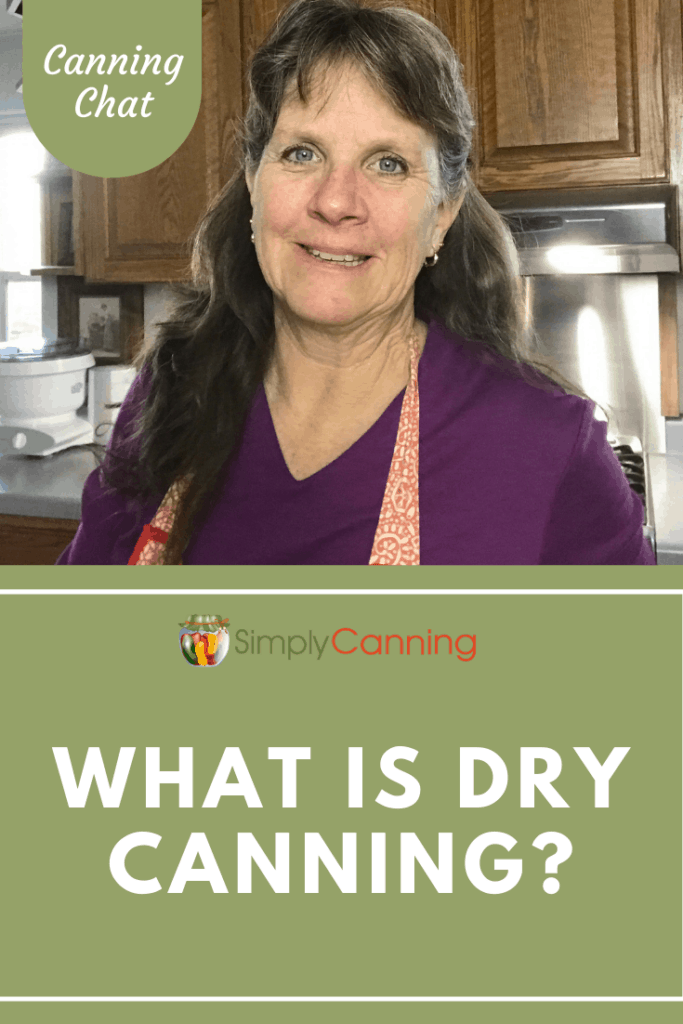
Page last updated: 5/27/2021

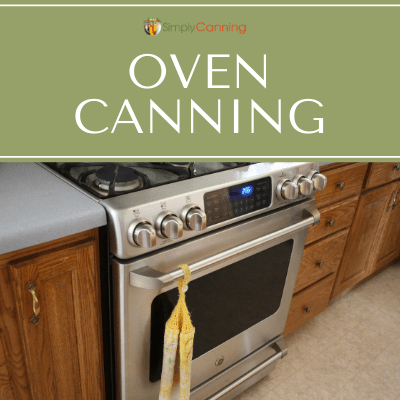
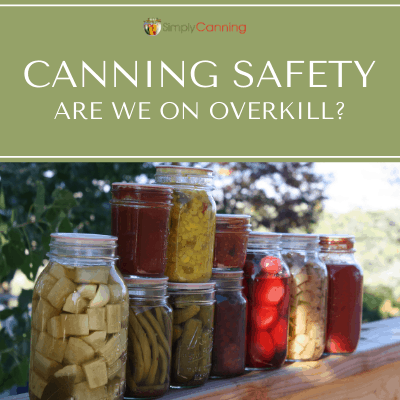
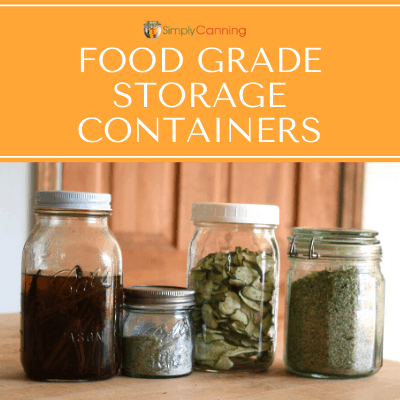
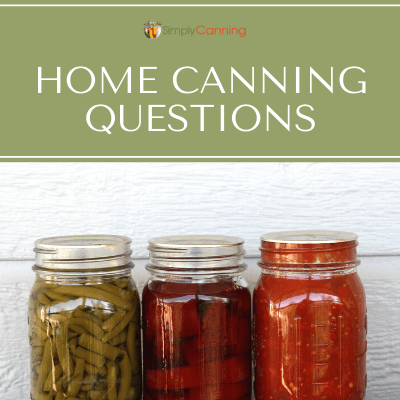
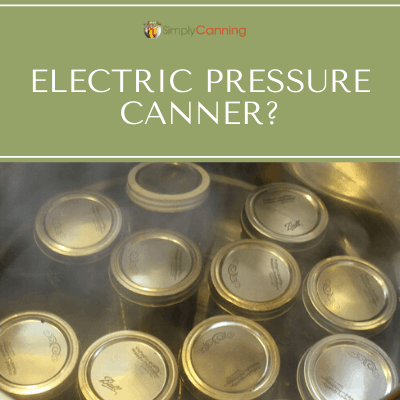
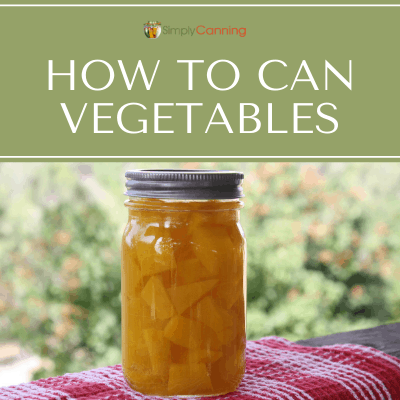
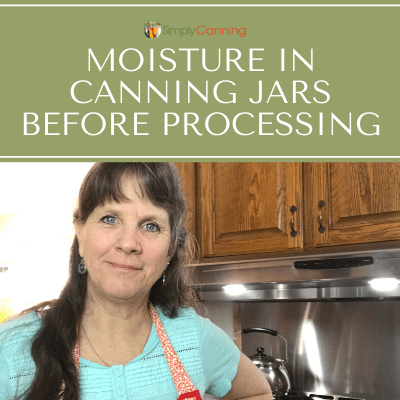
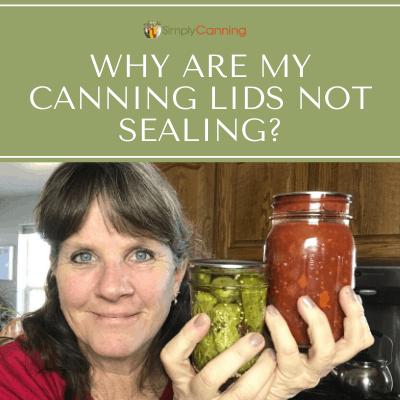
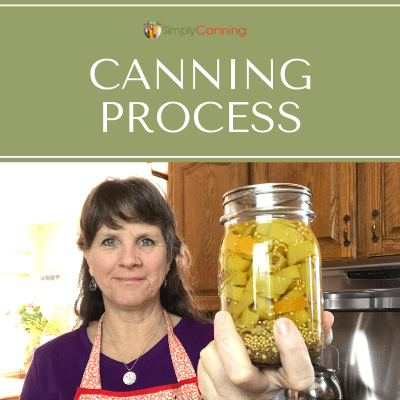
Thank you for this information on dry “canning” . I’d just seem a video with this and blueberries without liquid in a steam canner . I was very suspicious just because I’ve never seen or heard of experienced canners in my family doing this. Your video was so timely and helpful!! Greatly appreciate your cautions! I ferment foods too so I know how bacteria is so plentiful in the air itself and on the surfaces of foods. It makes sense a liquid is needed to circulate and kill the bacteria with even heat. Thank you!!!
Dry canned potatoes have been analyzed by accredited labs and have showed to be safe. There are numerous sites that display the certified analysis that you can easily find. Your conclusions are not science based but your opinion which you are entitled to. I encourage your readers to research this and make their own decision.
I’d love to have that resource if you care to share. I could not find anything solid to change my mind.
I have venison in the pressure cooker right now that is just browned but not cooked all the way through and I dry packed it. I will see how much juice is in the jar when it’s done. If there isn’t any, I may not risk it and put them in the freezer.
Hi Tammy, Actually meat is one product that can be safely canned without liquid. Check this post for how to can venison. If you brown it you should probably be doing a hot pack with liquid… but you’d have to be the one to determine if those pieces of meat were truly raw. :).
I would love nothing more than to see a series specifically on dry canning in metal cans like how Thrive packages theirs. There really isn’t any safe, accurate, and thorough resources & information on this type of “canning.” I am really interested as several years ago I got into more dehydrating and now learning more about freeze-drying. I personally think that it is not only very beneficial but also in some cases very necessary to know how to preserve food in all areas. Whether it be freezing, water bath canning, pressure canning, steam canning, dehydrating, and/or freeze-drying. Having knowledge of a variety of safe food… Read more »
I love this! I’ll put it on my list of things to do. I’ve done some canning in metal cans and yes there are techniques and things to remember. Thank you for the suggestion.
What if you put water say with fresh cut potatoes and just let the pressure canner cook and seal it
Potatoes are always processed as a hot pack. Which means they are partially cooked prior to processing. I’ve got full directions on canning potatoes here. Check that out and see if it helps.
except if they are included in a “stew” raw pack canning. The problem is that the testing stopped what about 8 years ago or more. I struggle with the fact that how can we say it is unsafe when we don’t know if it was actually tested to be not safe OR, more likely, just not gotten around to being tested before the testing stopped. I personally feel that we should be diligent and do our own research and go from there.
OH I absolutely recommend doing your own research for sure. I’m not quite sure what your first sentence means. “except if they are included in a “stew” raw pack canning.” If you have a tested recipe for a raw pack stew (I believe Ball has one for this) Then it is fine… but it will have liquid. At least I’ve never seen one that is without liquid. If I’m not understanding your comment feel free to post again. :). And you are correct some things are not recommended just because it has not been tested. The problem is we also… Read more »
I am glad you posted this. I saw this & thought it might be a good idea. Your explanation helped me decide not to “Dry Can” Vegetables & Meat. Thank You for keeping us safe. I love it when your emails hit my mail box.
Yay, so glad Sharon’s page was helpful to you! Happy canning. 🙂
Rachel (Sharon’s assistant)
Hi Angi, Just to clarify, with meat it is ok to can it without liquid. That method is safe for raw meats only as the meat does produce it’s own liquid. It is vegetables and fruit that you must include the liquids. Here is a link to canning meat. If you notice… raw meat is packed without liquid. Cooked meat has liquid.
I have been canning veggies, deer meat & chicken w/o liquid for many years. Like you said “it’s not been tested” to be approved. We are all testing it & I do so in my Nesco electric canner. Carrots, beets, potatoes with some butter and a bit of seasoning does well. Deer meat & chicken make their own broth while processing. Your article was very informative but I think I will continue.
Hi Barbara, Raw meat like venison and chicken is fine for canning without liquid the meat will produce its own liquid. The problem I see is people canning vegetables like you are without adding liquid. You say you are “testing” it… but it really isn’t scientific testing in the same manner as I mean in my video. You are taking a risk with botulism. Thank you for your respectful disagreement. On this, we’ll have to agree to disagree. You say your vegetables with butter and seasoning do well. But that is just a so far situation. Again the risk is… Read more »
So I’m struggling with this. Potatoes, specifically, and likely carrots, etc., will create their own liquid as they are processed in a pressure canner–similar to what meat does. It appears there will even be liquid at the bottom of the jar. Also, steam (which would be created as the root vegetable cooks) is (at least outside the pressure canner) hotter than water. I’m struggling to see why this would not work with something that will generate it’s own steam…
My husband and I dried potatoes last month and we use a pressure canner we scrub them very well they did not have much skin left on them they came out fine and tastes really good
The issue is not taste or texture. The issue is safety. I still do not recommend dry canning potatoes.